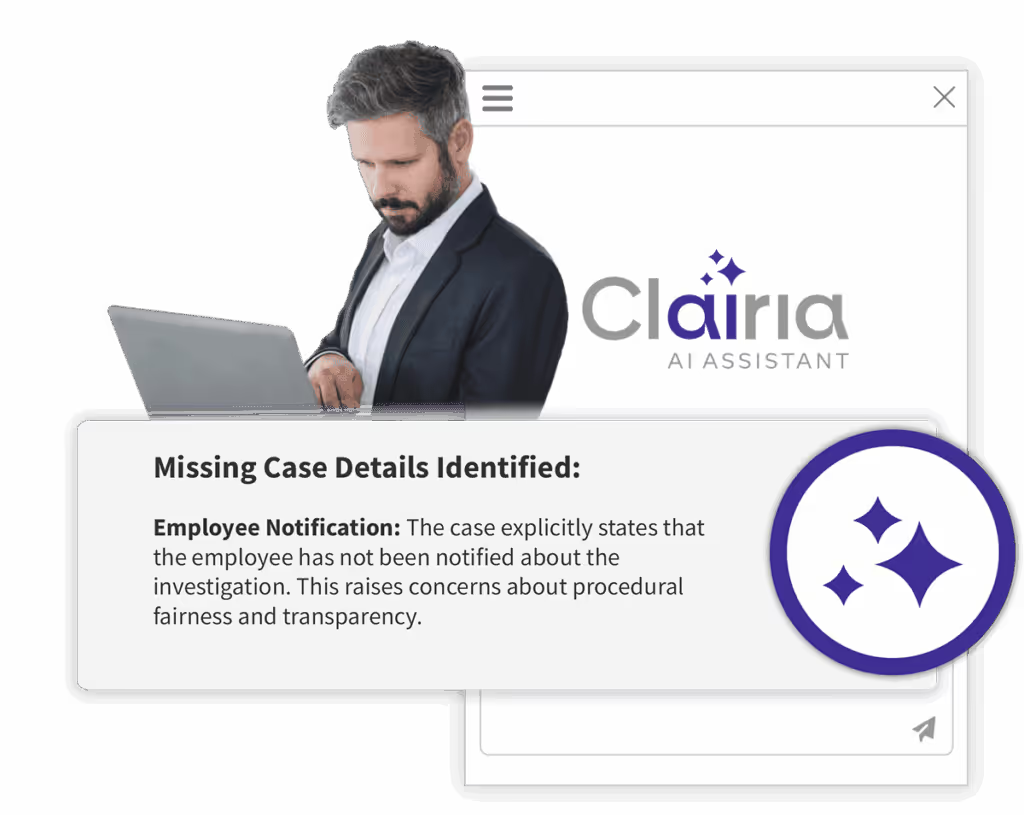How Compliance Monitoring Addresses the Limitations of Third-Party Due Diligence
Businesses today are more interconnected than ever, while also managing supply chains that are undergoing the most significant changes in a generation. At the same time, there is heightened scrutiny from external stakeholders regarding the practices of every entity within an organization’s value chain. As a result, companies must be more vigilant in monitoring the compliance risks that arise from their third-party relationships.This often involves conducting comprehensive due diligence to ensure partners meet high regulatory, compliance, and reputational standards. However, as the complexity and scale of third-party networks grow, due diligence alone is no longer sufficient.To address its limitations, organizations are increasingly adopting compliance monitoring, which provides ongoing oversight and helps strengthen risk management practices.
What Is Compliance Monitoring? (and How It Works)
Compliance monitoring is the practice of systematically tracking and evaluating an organization’s activities to ensure adherence to legal, regulatory, and internal policy requirements. It’s a critical component of a robust compliance program, helping organizations identify issues early, mitigate risk, and maintain accountability.The process typically involves collecting data from multiple sources—such as employee reports, audit logs, transaction records, and third-party interactions—and analyzing it for signs of non-compliance. Monitoring can be ongoing or periodic, and may include automated alerts, manual reviews, or both. When potential issues are flagged, they can be escalated for investigation, corrective action, or further analysis. Over time, compliance monitoring helps organizations spot trends, close gaps, and strengthen internal controls.
Correcting Errors Missed During Due Diligence
In addition, spend monitoring can also help identify and mitigate against any inadvertent or purposeful errors or oversights made during the front-end third-party due diligence process. If a third party is not recognized as high-risk or government-interfacing in the diligence process due to employee error or rogue behavior, spend compliance monitoring using data analytics can still detect whether the third party might be interacting with the government. For example, suppose a third party identified by an employee as “low-risk” appears in expense categories typically used by high-risk third parties. In that case, continuous monitoring tools can detect such an anomaly and potentially root out a corrupt scheme or sham third party before systemic issues arise.To better understand why due diligence processes fall short, it’s important to examine several underlying challenges.
1. It’s a One-Time Event
The typical due diligence exercise ends at contract onboarding and would not cover line items hidden amid legitimate charges in the third party's invoices.
2. Risk Classifications Can Be Inaccurate
Although the process may be subjective and therefore vulnerable to inaccuracies or human error, it requires specialized knowledge for employees to carry out their tasks accurately. For example, companies should consider third parties high-risk if they interact with government officials or customers on behalf of the enterprise. However, without complete comprehension of the agency principle involved and the entity’s governmental interactions combined with inadequate due diligence processes, these entities could easily go unnoticed and be labeled low-risk instead.Employees may misclassify the nature of the third party to avoid heightened review or may collude with the third party to provide fraudulent or misleading information, hindering a company’s ability to protect itself from malicious actors.
3. Global Transparency Challenges
At the same time, access to ownership information of third parties continues to be limited by both the presence of multiple secrecy jurisdictions around the world and recent privacy-related court rulings in Europe that have led to some countries removing access to their previously-public ownership registries.These developments create significant obstacles for compliance teams tasked with conducting due diligence or monitoring third-party relationships. Without reliable access to ownership data, it becomes more difficult to identify beneficial owners, assess potential conflicts of interest, or detect links to sanctioned entities or politically exposed persons (PEPs). The lack of standardized global disclosure requirements further complicates cross-border compliance efforts, as organizations must navigate a patchwork of regulations and reporting standards that vary widely by jurisdiction.
4. High Cost and Scalability Issues
These challenges are exacerbated when a company already has numerous existing third parties relationships or gains many new third parties via an acquisition. Understanding the risks posed by a large number of third parties can be highly challenging. Manually cataloging those third parties, sending diligence questionnaires, and running enhanced diligence reports can be time-consuming, error-prone, and expensive for the enterprise and its third parties, which may lead to the enterprise failing to complete this work comprehensively and accurately.
Want to learn how Case IQ can reduce your risk?
Case IQ's compliance monitoring tool can help you proactively address and reduce your risks. To learn how, book a call with one of our experts today.
Book a CallThe Hidden Risks That Due Diligence Misses
Even when due diligence is thorough and compliant, it doesn’t guarantee protection against future misconduct. Legitimate third parties may still engage in corrupt behavior after onboarding, creating hidden vulnerabilities within a company’s operations.For instance, several years ago, a number of oilfield services enterprises were penalized for improper payments made by otherwise legitimate logistics vendors. These payments were disguised as service fees under vague labels like “special handling charges.”Similarly, many enforcement actions over the years have involved sales channel partners, such as distributors, who appeared to be credible commercial entities but used sales commissions or margins to fund improper payments. Due diligence, in these scenarios, typically would not detect such behavior hidden within routine invoices or credit transactions.
How Compliance Monitoring Closes the Gaps in Due Diligence
When it comes to third-party risk mitigation, for many companies, the missing piece is continuous monitoring of their expenditures for possibly fraudulent or corrupt payments. A continuous spend monitoring program using data analytics can provide in-house compliance and audit professionals with real-time tools to identify problematic payments or other anomalous third-party behavior while generating a wealth of data that can strengthen and improve a compliance program.Such spend monitoring can extend and supplement front-end due diligence processes and close many control gaps identified above. For example, only continuous compliance monitoring can address the risks of bona fide third parties, such as customs brokers or distributors, engaging in improper payments after being retained. Spend compliance monitoring can detect anomalous patterns in payments or discounts with those third parties that might indicate corrupt activity.
Solution: Off-the-Shelf Compliance Monitoring Systems
Fortunately, fully end-to-end integrated due diligence and compliance monitoring systems are now available through innovative off-the-shelf software. These systems allow companies to cost-effectively transform their third-party management from manual, subjective, and front-end-focused systems to automated, objective, and truly end-to-end risk management systems.Enterprises almost always lack the internal software development and advanced data analytic capabilities to build and maintain such end-to-end compliance monitoring systems internally. On the other hand, consulting firms may offer data analysts but are not strong in software development and support. In addition, those firms are incentivized to provide as many service hours as possible and often produce bespoke solutions that are difficult and costly to build and maintain.
How to Get Started With Compliance Monitoring
Getting started with compliance monitoring begins by defining your organization's top risk areas and compliance goals. Start by identifying what needs to be monitored—such as regulatory reporting, policy adherence, or third-party behavior—and which data sources you’ll need to track across departments. It’s also important to establish clear roles and responsibilities, determine how issues will be escalated, and outline how results will be reported to leadership or regulators.A strong technology foundation can make this process significantly more efficient. Case IQ’s software allows teams to automate their end-to-end third-party management programs across risks, and across the life cycle of all third-party engagements.Starting with a focused, risk-based approach and the right tools in place, organizations can build a monitoring framework that supports continuous improvement and long-term compliance success.
Conclusion
While traditional due diligence remains a vital part of third-party risk management, it is no longer sufficient on its own. Relationships, risks, and regulations evolve, sometimes rapidly, and organizations need a way to keep pace. Compliance monitoring fills this gap by offering continuous oversight, enabling teams to detect emerging issues, enforce accountability, and respond proactively.By integrating ongoing monitoring into your compliance program, you gain deeper visibility into third-party behavior and strengthen your overall risk posture. With the right tools in place, such as Case IQ’s purpose-built compliance monitoring solution, organizations can move from static, one-time checks to dynamic, data-driven decision-making, protecting both their operations and reputation over the long term.To learn about Case IQ and our case management and compliance solutions, reach out to us for a call today.
FAQs
1. How does compliance monitoring help reduce third-party risks?
Compliance monitoring provides ongoing oversight of third-party behavior, enabling organizations to detect red flags, such as policy violations, adverse media, or regulatory breaches, in real time. This proactive approach helps prevent issues before they escalate into legal or reputational risks.
2. What are the limitations of traditional due diligence?
Traditional due diligence is often a one-time check, relying heavily on self-reported or static information. It can miss emerging risks, ongoing misconduct, or changes in a third party’s risk profile over time.
3. What is an example of compliance monitoring in action?
A company may use automated tools to continuously screen its vendors for sanctions, negative news, or regulatory filings. When a vendor is flagged in a new enforcement action, the compliance team is alerted and can respond immediately.
4. What are the challenges in implementing compliance monitoring?
Key challenges include integrating monitoring tools with existing systems, ensuring data quality, and managing the volume of alerts generated. Smaller teams may also struggle with resource constraints or lack of internal expertise to act on the insights.










